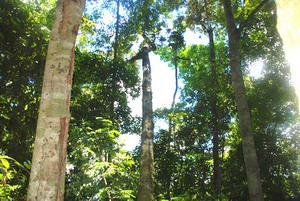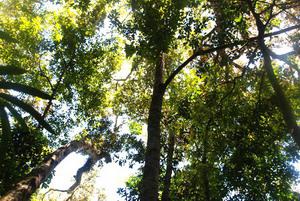Bui Manh Hung
This project is to restore and conserve natural secondary forests as well as to bring habitat and environment back for fauna and flora species in the Central Highlands, Vietnam.

Natural forest in the study area.
In recent decades, the forest area is significantly decreased. Poor-quality natural forests/secondary forests occupied up to 80% of the total forest area. Vietnam has faced serious problems about natural forest area and quality decline and habitat lost while human needs are increasing dramatically. Therefore, solutions for sustainable forest management, restoration conservation of secondary forests are a matter of urgency.

The project will be conducted in Kon Ka Kinh National Park, Gia Lai, Vietnam. Findings of this project are to restore, bring conditions of primeval forests back for natural secondary forests in the Central Highlands in particular and Vietnam in general. The project will contribute to bring habitat and environment back for fauna and flora species. This project will make some contributions to enhance local people’s awareness about forest restoration and conservation.
The project will study the structure of both secondary forest and primeval forest carefully. The project will study frequency distributions of diameter, height variables. These distributions are also tested and modeled with probability distributions. In addition, differences in forest growth will also analysed by using cluster and discriminant analyses. This will be the basis for restoring and preserving the secondary forest and bring habitat back.
Another focus of the project is to explore plant species diversity indexes of each forest type and compare them with each other. In addition, the spatial distribution of big trees and regenerating trees will also be analyzed by using point pattern analysis. Minimum distances from ecological important tree species to the plot center will be measured. The investigation and analysis of gaps and soil samples in these forest types will also be conducted. Additionally, light intensity under the canopy will be measured and analyzed. It is the basis for the managers to understand which species should be planted and restored under those conditions.
I will work with two scientific assistants of Kon Ka Kinh National Park and some local people. They will also gained benefits from wage and knowledge improvement about forest restoration and conservation of secondary forests through my training.
In conclusion, project findings are crucial evidences for managers and foresters, particularly in Central Highlands, to propose and decide on measures in order to restore and conserve secondary poor forests effectively and bring habitat and living conditions for the flora and fauna here in particular and in Vietnam in general.